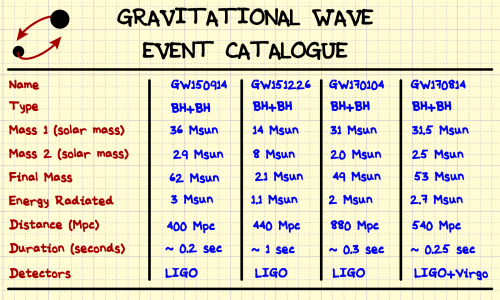by Shane L. Larson
Nature guards her secrets jealously, and wresting them from her grasp is an arduous, and frustrating task. One of the great difficulties of the modern world is that knowledge is so easy to pull up, with the flick of a finger across a screen, that we forget how hard it was to obtain that knowledge in the first place. Every bit of knowledge that you and I take for granted was earned, at great cost, by a long line of humans who came before us.
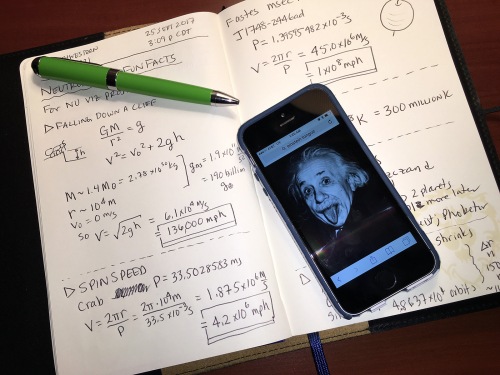
Knowledge is hard to come by, a fact that we often forget in an age where virtually any and all information is readily available on demand with a handheld device. [Image: S. Larson]
This new branch of observational astronomy burst on the scene with much fanfare in early 2016 when it was announced that the two LIGO gravitational wave observatories had detected a pair of black holes merging far across the Cosmos. We knew roughly where it was in the sky, but only roughly in the same sense that “Kansas is roughly in North America.” The physics of how an instrument like LIGO works means detection is easier than pointing — pointing to a gravitational wave source on the sky is hard, because Nature guards her secrets jealously.
We call gravitational wave detectors “observatories“, but they are very different from traditional telescopic facilities that you and I are familiar with. Telescopes work more or less like your eyes — they point in a given direction, and are sensitive to a narrow space in front of them (what astronomers call the “field of view“).
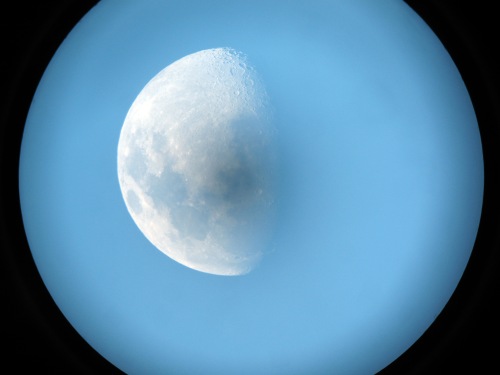
A daytime picture of the Moon, taken by holding my phone up to the eyepiece of my backyard telescope. The field of view is not much bigger than the Moon, which is very small on the sky. [Image: Shane L. Larson]
We use this same method of triangulation in gravitational wave astronomy — multiple detectors can point better than single detectors alone. The more detectors, the better a source of gravitational waves can be found on the sky.
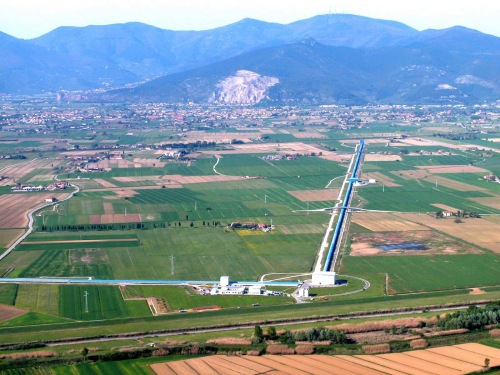
The Virgo gravitational wave observatory, outside of Pisa, Italy, looking roughly northward toward the Monte Pisano Hills. [Image: Virgo Collaboration]
There was much celebration in the LIGO-Virgo Collaboration that day, because gravitational wave detectors are not easy to build. Getting to the moment where all three advanced detectors were online together was a tremendous accomplishment, and one that held much promise. With three detectors, we should be able to pinpoint gravitational wave sources on the sky better than ever before. The holy grail of events would be to make a detection, and narrow the skyview to an area so small that one could reasonably point a telescope there and possibly see a simultaneous signal in light.
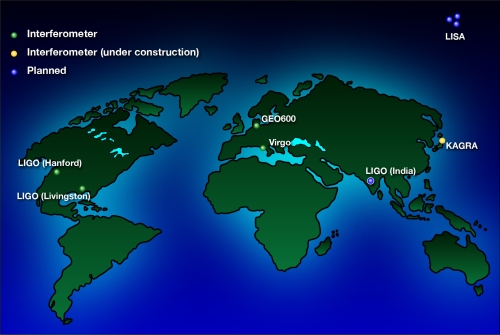
Doing directed astronomy with gravitational wave detectors requires a network of many facilities. As time goes on, more are being built around the world.
We held our breath, and dared not hope. That’s the nature of astronomy — it’s a spectator sport. All we can do is turn on our instruments, and sit here on Earth and wait for the Universe to do something awesome.
As it turns out, we didn’t have to wait long for something awesome. On 14 August 2017, all three detectors registered the gravitational wave signature from a pair of merging black holes. At about 5:30am CDT in the United States (10:30:43 UTC), a signal came sailing through the Earth, ringing off each of the three gravitational wave detectors that were diligently collecting data, hour after hour, minute after minute, waiting for the Cosmos to do something. Nature did not let us down. The signal was a strong series of spacetime ripples, with the same pattern, showing up in each of the three detectors. We call the event GW170814 (here is a LIGO-Virgo factsheet on the event), and it brings the total number of events in the gravitational wave catalog to 4.
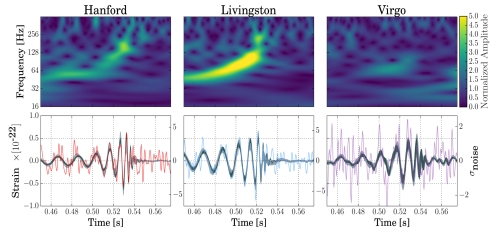
The GW170814 signal, as gravitational wave astronomers like to represent it. The top row shows the spectrograms, showing how the frequency (analogous to the pitch of a sound) evolves in time, chirping as you go from left to right. The lower row shows the waveform traces in time from left to right, growing stronger as the black holes approach and merge, then tapering away. [Image: LIGO-Virgo Collaboration, from our paper]
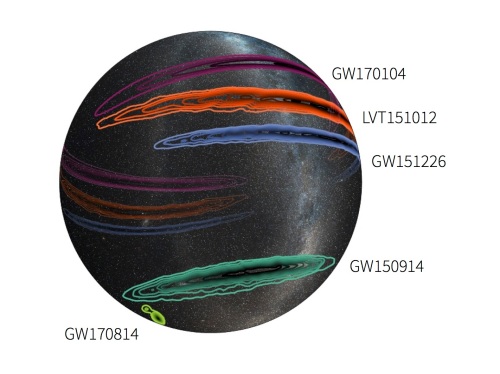
The sky location of all gravitational wave events to date. [Image: LIGO/Virgo/NASA/Leo Singer (Milky Way image: Axel Mellinger)]
Until then, my heartfelt congratulations to my colleagues and friends who I work with on LIGO and Virgo — here’s to many more long years of searching the Cosmos. Viva Virgo!
——————
You can read about the previous LIGO detections in my previous posts here:
The Harmonies of Spacetime – GW150914
My Brain is Melting – GW150914 (part 2)
The Cosmic Classroom on Boxing Day (GW151226)
New Astronomy at the New Year (GW170104)

